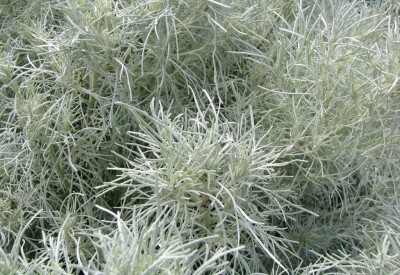






Every garden is unique and serves as a reflection of the gardener who creates it, much in the same way a work of art reflects the artist. The colors you choose for your garden can even be likened to notes in a song, each serving to complement one another within the framework of the landscape and fused into a single, creative expression.
French composer Achille-Claude Debussy is often quoted as saying “Music is the space between the notes,” suggesting that the silence in a song is as important as the sound. Without break in sound, or color in a scene, the results clash and collide. One way to add breaks in garden color is by using “muted” colors in the garden, such as plants with silver or gray color.
Plants with silver or gray color serve as buffers between areas of intense color or changes in theme. When used on their own, they gently soften the landscape. Let’s learn more about how to use silver foliage plants.
Plants with silver or gray color are a biological adaptation that allows them to retain more water in dry, arid environments. Plant them in areas with dry soil that drains quickly after a rain. When they get too much water, gray and silver plants will develop a dull, leggy appearance.
Gray and silver plants are a pleasure to view and are easy to maintain. Learning how to use silver foliage plants is as simple as seeing what others have done. Visiting anything from neighborhood gardens to botanical gardens should get you started with some ideas.
If you are interested in creating a gray garden, here are some silver-leaved plants that work well:
Copyright © www.100flowers.win Botanic Garden All Rights Reserved